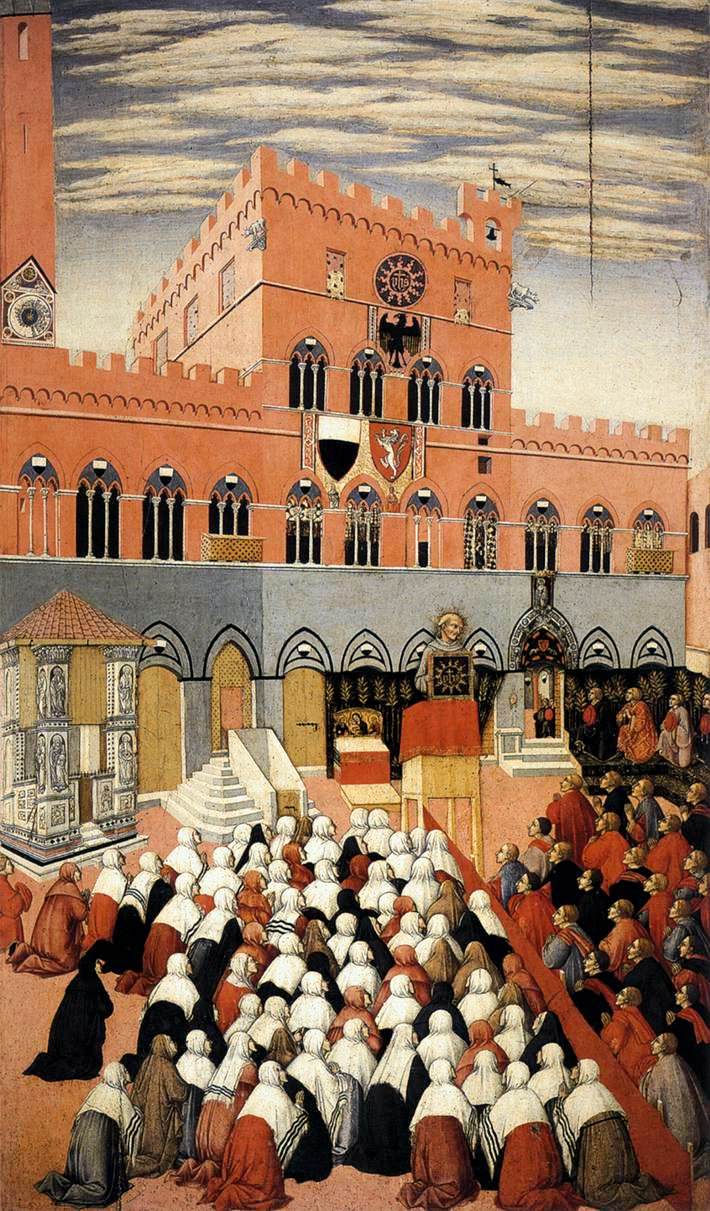Mama, Talk About Our New Baby is a great parental tool that supports breastfeeding, co-sleeping, baby wearing, and raising emotionally intelligent older siblings.
Add a CommentViewing: Blog Posts Tagged with: breastfeeding, Most Recent at Top [Help]
Results 1 - 3 of 3
Blog: The Children's Book Review (Login to Add to MyJacketFlap)
JacketFlap tags: Family, Ages 0-3, Siblings, Picture Books, Parenting, Baby Books, Author Showcase, New Baby, Breastfeeding, Parenting Books, Attachment Parenting, Social Graces, Dedicated Reviews, New Sibling Book, S. Marie Carlson, Toni Olson, Add a tag
Blog: OUPblog (Login to Add to MyJacketFlap)
JacketFlap tags: infants, breastfeeding, suckling, *Featured, fertility and pregnancy, chromosome, oxford journals, Science & Medicine, Health & Medicine, birth-spacing, David Haig, Evolution Medicine and Public Health, infant sleep, parent–offspring, interbirth, nitta, minoru, siblings, Journals, fitness, Add a tag
By David Haig
A woman who gives birth to six children each with a 75% chance of survival has the same expected number of surviving offspring as a woman who gives birth to five children each with a 90% chance of survival. In both cases, 4.5 offspring are expected to survive. Because the large fitness gain from an additional child can compensate for a substantially increased risk of childhood mortality, women’s bodies will have evolved to produce children closer together than is best for child fitness.

Sleeping baby by Minoru Nitta. CC BY 2.0 via Flickr.
Offspring will benefit from greater birth-spacing than maximizes maternal fitness. Therefore, infants would benefit from adaptations for delaying the birth of a younger sib. The increased risk of mortality from close spacing of births is experienced by both the older and younger child whose births bracket the interbirth interval. Although a younger sib can do nothing to cause the earlier birth of an older sib, an older sib could potentially enhance its own survival by delaying the birth of a younger brother or sister.
The major determinant of birth-spacing, in the absence of contraception, is the duration of post-partum infertility (i.e., how long after a birth before a woman resumes ovulation). A woman’s return to fertility appears to be determined by her energy status. Lactation is energetically demanding and more intense suckling by an infant is one way that an infant could potentially influence the timing of its mother’s return to fertility. In 1987, Blurton Jones and da Costa proposed that night-waking by infants enhanced child survival not only because of the nutritional benefits of suckling but also because of suckling’s contraceptive effects of delaying the birth of a younger sib.
Blurton Jones and da Costa’s hypothesis receives unanticipated support from the behavior of infants with deletions of a cluster of imprinted genes on human chromosome 15. The deletion occurs on the paternally-derived chromosome in Prader-Willi syndrome (PWS). Infants with PWS have weak cries, a weak or absent suckling reflex, and sleep a lot. The deletion occurs on the maternally-derived chromosome in Angelman syndrome (AS). Infants with AS wake frequently during the night.
The contrasting behaviors of infants with PWS and AS suggest that maternal and paternal genes from this chromosome region have antagonistic effects on infant sleep with genes of paternal origin (absent in PWS) promoting suckling and night waking whereas genes of maternal origin (absent in AS) promote infant sleep. Antagonistic effects of imprinted genes are expected when a behavior benefits the infant’s fitness at a cost to its mother’s fitness with genes of paternal origin favoring greater benefits to infants than genes of maternal origin. Thus, the phenotypes of PWS and AS suggest that night waking enhances infant fitness at a cost to maternal fitness. The most plausible interpretation is that these costs and benefits are mediated by effects on the interbirth interval.
Postnatal conflict between mothers and offspring has been traditionally assumed to involve behavioral interactions such as weaning conflicts. However, we now know that a mother’s body is colonized by fetal cells during pregnancy and that these cells can persist for the remainder of the mother’s life. These cells could potentially influence interbirth intervals in more direct ways. Two possibilities suggest themselves. First, offspring cells could directly influence the supply of milk to their child, perhaps by promoting greater differentiation of milk-producing cells (mammary epithelium). Second, offspring cells could interfere with the implantation of subsequent embryos. Both of these possibilities remain hypothetical but cells containing Y chromosomes (presumably derived from male fetuses) have been found in breast tissue and in the uterine lining of non-pregnant women.
David Haig is Professor of Biology at Harvard University. he is the author of “Troubled sleep: Night waking, breastfeeding and parent–offspring conflict” (available to read for free for a limited time) in Evolution, Medicine, and Public Health. The arguments summarized above are presented in greater detail in two papers that recently appeared in Evolution, Medicine, and Public Health.
Evolution, Medicine, and Public Health is an open access journal, published by Oxford University Press, which publishes original, rigorous applications of evolutionary thought to issues in medicine and public health. It aims to connect evolutionary biology with the health sciences to produce insights that may reduce suffering and save lives. Because evolutionary biology is a basic science that reaches across many disciplines, this journal is open to contributions on a broad range of topics, including relevant work on non-model organisms and insights that arise from both research and practice.
Subscribe to the OUPblog via email or RSS.
Subscribe to only science and medicine articles on the OUPblog via email or RSS.
The post Breastfeeding and infant sleep appeared first on OUPblog.
Blog: Emily Smith Pearce (Login to Add to MyJacketFlap)
JacketFlap tags: Siena, early Renaissance, Italian art, Travel, history, Art, Culture, Madonna, painting, art history, Renaissance, mother, Italy, Italian, Museum, nursing, La Leche League, breastfeeding, Add a tag

I really enjoyed the museums in Siena in part because they were small enough to manage with children, and not so packed. But the best part was their troves of early Renaissance art. I like the early stuff because it’s not so all-fired perfect like the late Renaissance art. During the early period, artists had figured out a few things about perspective, but they hadn’t yet cracked the whole code.
The art from the early period also seems brighter and more colorful than the later Renaissance. I find myself relating to it because it’s more like what I’d want to create myself. Perfection in artwork doesn’t really interest me that much, probably because I’m living after the invention of photography. So the beautiful but imperfect early Renaissance paintings (as well as pre-Renaissance works) have an almost modern feel to me.
Disclaimer: this isn’t an all that scholarly perspective, so bear that in mind.

St. Bernardino Preaching, by Sano di Pietro (above)—This scene takes place in the same Piazza del Campo from my previous post. I couldn’t find a better image of it, but in real life the colors are much brighter. The building behind St. Bernardino is the color of papaya flesh.
(detail from The Siege of the Castle of Montemassi, by Simone Martini)
The image above is just a tiny bit of a beautiful and famous painting. You can see the artist has made an attempt to show the dimensionality of the castle, but it’s still a bit flat, with an almost cubist feeling. I love it.
Our favorite pieces in the museum were the nursing Madonnas. I had never seen anything like them and was so moved by their tenderness. Whoever thought of Mary breastfeeding Jesus? Evidently plenty of artists have, but I hadn’t. I found the images so intimate, so human. So different from some other Madonnas where she’s looking away from baby Jesus, holding him like she’s not sure whose kid this is but would someone please take him?
Evidently there are a lot of these lactating Madonnas from 14th century Tuscany. According to Wikipedia, they were “something of a visual revolution for the theology of the time, compared to the Queen of Heaven depictions.”

Madonna del latte, Paolo di Giovanni Fei
“During the Council of Trent in the mid-16th century, a decree against nudity was issued, and the use of the Madonna Lactans iconography began to fade away.”
Sigh. At least they didn’t burn them.
The coolest thing about seeing these paintings was how much my small children responded to them. I think the idea of baby Jesus being so like themselves, so like oth



